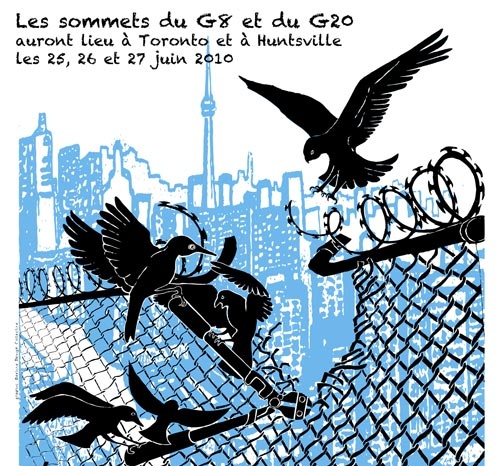 |
 |
 |
 |
 |
 |
|
 |
 |
 |
 |
 |
 |
 |
Régions du Québec |  |
 |
 |
|
 |
 |
|
 |
 |
|
 |
 |
 |
 |
 |
 |
Temas |  |
 |
 |
|
 |
 |
|
 |
|
 |
 |
 |
Grozny And Baghdad: Disturbing Parallels
Today in Chechnya, the city of Grozny – formerly the home of almost half a million people - lies in ruins: utterly devastated. The fate of Grozny thus stands as a testament to the brutal and terrible cost of modern urban warfare...
Today in Chechnya, the city of Grozny – formerly the home of almost half a million people - lies in ruins: utterly devastated. The fate of Grozny thus stands as a testament to the brutal and terrible cost of modern urban warfare. In the wake of the collapse of the Soviet Union, separatist ambitions previously repressed in the overwhelmingly Muslim republic once again bubbled to the surface to provide the greatest crisis faced by the Russian Federation since that fateful (some would say disastrous) moment.
As the separatist movement rose to challenge the authority of the Kremlin, intense and bloody battles erupted in Chechnya during the period 1994-1996. During this period, and the later conflict, beginning in 1999, it is estimated that over 2,500 Russian troops paid with their lives. Unofficial estimates suggest an even higher price was paid. The price paid by the Chechens themselves was even more onerous: with an estimated 80,000 casualties, and the virtual leveling of habitations and infrastructure. Heating, water, electricity: were all devastated. Guerilla resistance continues to this day, providing an ongoing nightmare for Russian occupation forces, who continue to grapple with regular ambushes.
Like the current war in Iraq, the war in Chechnya also concerned what US commentators like to refer to as ‘resource security’: that is, the control of oil. In the case of Chechnya, at stake was one of the most oil and natural gas rich regions of the former USSR, including refineries and a major oil pipeline. The risk of losing control of this pipeline, in particular, posed a major strategic dilemma for the Kremlin. Whitehouse strategists, however, seem to be far more ambitious than successive Kremlin leaders, apparently aiming for nothing less than domination of the world’s oil supply via the Persian Gulf. Containment of Iran and Syria will prove to be a useful byproduct of this process.
There are important differences, however, between the nightmare confronted by Russian forces, and the ordeal currently facing coalition forces in their attempt to take Baghdad. The Kremlin invaded Chechnya originally with a force of some 45,000 troops: this in an entire region of barely over one million. http://www.infoplease.com/spot/chechnyatime1.html
By comparison, coalition forces in Iraq number over 300,000, but are attempting to subdue a nation of some 22 million. Baghdad itself comprises a sprawling metropolis of over 5 million: a potential nightmare for Coalition troops facing a hostile populous and vicious house to house fighting over a huge urban landscape.
Furthermore, though, while Chechen fighters were able to retreat to neighboring Dagestan to reorganize, one suspects that Syria would not dare provide a base for such a movement in a post-B’aathist Iraq under long term US occupation. Additionally, as compared to the mountainous terrain of Chechnya and neighboring Dagestan: used by rebels as a base from which to continue an ongoing guerilla war, Iraqi forces in the North confront overwhelming Coalition airpower, and the further obstacle of Kurdish forces.
Some military aspects of the two conflicts, however, will seem disturbingly familiar to Coalition commanders. Suicide bombings have been employed in Chechnya, as in Iraq, to devastating effect. In one such period the Kremlin admitted to having lost 37 soldiers to ‘suicide trucks’. Chechen rebels, meanwhile, claimed the figure to be more in the vicinity of 200. http://www.rnw.nl/hotspots/html/chechnya000704.html As Coalition troops penetrate Baghdad in greater numbers and concentration, vulnerability to such attacks will increase exponentially.
And while Baghdad: a city boasting a fairly low and level skyline, does not provide the same ambush opportunities as some cities, this certainly ought not be taken as cause for complacency on the part of the Coalition. Russian armour, for instance, often faced devastating ambushes in the streets of Grozny. Boasting extensive smuggling and organized crime links, Chechen rebels were able to secure potent anti-tank weaponry to wreak havoc upon Russian formations. One Russian soldier recalled the horror of Chechen ambushes on Russian armoured columns in Grozny during the period of the initial invasion:
“According to the well-developed tactics, the first and the last vehicles in the convoy are destroyed first. Then, the rest of the column is methodically eliminated. Reliable tactics. Very few ever escape.
 |
 |
 |
 |
G20 Especial |  |
 |
 |
|
 |
 |
|
 |
Ofrecemos varios informes independientes y testimonios ...

Lista de acciones durante el 'contracumbre' a Toronto! Algunos medios independientes en Toronto G20 Centro de medios alternativos http://2010.mediacoop.ca Media Co-op Toronto http://toronto.mediacoop.ca Toronto Community Mobilization www.attacktheroots.net (en Inglés) |
 |
 |
 |
 |
 |
 |
 |
CMAQ: Vie associative |  |
 |
 |
|
 |
 |
|
 |
 Collectif à Québec: n'existe plus. Impliquez-vous ! |
 |
 |
 |
 |
 |
 |
 |
 |
|
 |
 |
 |
Ceci est un média alternatif de publication ouverte. Le collectif CMAQ, qui gère la validation des contributions sur le Indymedia-Québec, n'endosse aucunement les propos et ne juge pas de la véracité des informations. Ce sont les commentaires des Internautes, comme vous, qui servent à évaluer la qualité de l'information. Nous avons néanmoins une
Politique éditoriale
, qui essentiellement demande que les contributions portent sur une question d'émancipation et ne proviennent pas de médias commerciaux.
This is an alternative media using open publishing. The CMAQ collective, who validates the posts submitted on the Indymedia-Quebec, does not endorse in any way the opinions and statements and does not judge if the information is correct or true. The quality of the information is evaluated by the comments from Internet surfers, like yourself. We nonetheless have an
Editorial Policy
, which essentially requires that posts be related to questions of emancipation and does not come from a commercial media.


